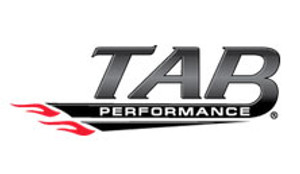Winter Motorcycle Storage
Posted by Wiley Moody on Nov 15, 2018
Axial Tilt
It affects us all. Some more than others, but when it happens, the world around us changes. And as we tilt away from the sun here in the Northern Hemisphere, a lot of folks are preparing to tuck their motorcycles away for the annual winter hibernation. This of course does not apply the the lunatics I see riding around on 15 degree days, not caring about atmospheric conditions and ignoring the frigid air. That always makes me smile and I hoist my coffee mug in salute from the cozy warmth of my Chevy Equinox.
So here are some things I do personally when it's time to winterize my bike.

Fuel
First and foremost is to address the fuel that's in the tank. There are two schools of thought when dealing with fuel. Number one; fill the tank to the very top with a Fuel Stabilizer/Ethanol treatment added.The idea is to keep any condensation from building up inside the tank during the various temperatures your bike will experience during storage. Blended gasoline can heighten this issue because ethanol is an alcohol that absorbs moisture from the atmosphere. Adding a Fuel Stabilizer with an Ethanol treatment will keep the fuel reasonably fresh until the first ride of spring and keep any moisture to a minimum.
The second school of thought, and is my preference, is to drain the fuel tank and fuel lines dry. It's definitely more labor intensive but is the only way to make sure you always have fresh fuel in the tank and no gunk or sludge ever forms. Any contaminants derived by stored fuel end up clogging fuel filters, lines, injection and carbureted systems, lowing the performance of the engine.
Oil
Changing the oil is always a good thing. You can't do it too much. Changing your oil before storage removes impurities and acids that can etch and add premature wear to bushings and bearings as it sits. Get your engine up to operating temperature and then drain as much old oil out as you can. Replace the filter and refill with new oil. Fire up the bike to get the fresh lubricant moving throughout the engine. Top it off and let it cool. It's up to you to replace any primary, clutch or transmission oil at this time but those areas usually can just follow the maintenance schedule your motorcycle manufacturers specifications call for.
Air
Say...when was the last time you cleaned or changed your air filter? If you follow the recommendations of your owner's manual and write down your service intervals as you perform them, then you know exactly when it was done and needs to be addressed again. But for the rest of us, an inspection of the element is in order. If the element is black and oily and you can't see through it when you hold it up to the sun, then it's probably a good time to clean or replace. Many of today's replacement air kits include a filter that can be cleaned using specific air filter cleaner that can last the life of the bike when properly maintained.
Battery
Most batteries in late model motorcycles are equipped with the AGM (Absorbed Glass Mat) type and most say they are maintenance free. That only means they are sealed and you no longer have to top them off with distilled water or add acid. But they probably will not hold much of a charge over the course of the storage duration. Plugging a Battery Tender in will keep the voltage topped off and the battery fresh until it's time to ride again. AGM batteries can develop a "memory" if not properly charged and will not offer peak performance for the following season. Battery Tenders are not chargers in the sense that they keep your battery at peak voltage, where battery chargers are meant to charge dead batteries, and meant for lead acid batteries only.
Clean
Before storage, wash and polish your motorcycle. Polish the painted areas and treat raw aluminum from corrosion. The main point is to keep filth from permanently adhering to you machine and road dirt with "who knows what's in it" from corroding and rusting your bike. This also gives you the opportunity to inspect wiring and critical fasteners and make any repairs before forgetting about them in the spring.
Cover
What type of environment are you storing your motorcycle in? If it's in a nice dry garage or your living room, a simple, breathable cotton dust cover will suffice. Any moisture the bike may encounter during storage can evaporate easily and filth with not build up on your paint and chrome. Areas that are covered but may be prone to excessive dust of moisture my require a more robust motorcycle cover that is elastic on the bottom to help seal off contaminants from getting up to the bike's surface. If the motorcycle is outside in the elements, than a waterproof cover is the way to go.
Security
Your motorcycle means a lot to you and it's a sizable investment. Don't rely on just your motorcycle's factory alarm system to protect it. Multiple layers of security will insure it's going to be there on that first nice spring day when you want to go riding. Many motorcycles include an integral fork lock that locks the front forks to one side, use it!. Adding a brake rotor lock or a lock of similar design insures the bike can not be rolled. But to keep thieves from picking it up and walking away with it, then you need to chain the bike to a permanent fixture. Sleeping next to it with a shotgun helps, but is extreme in most cases.

























